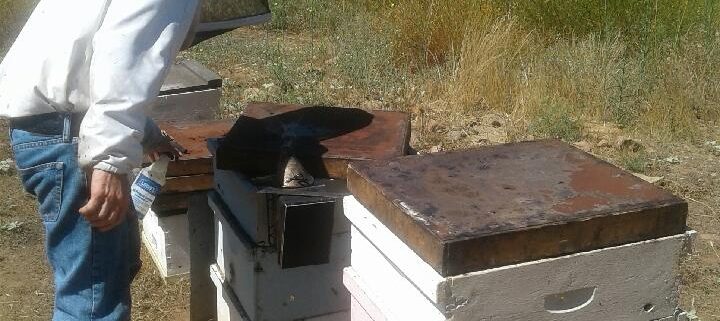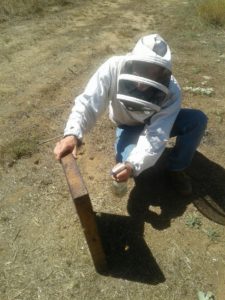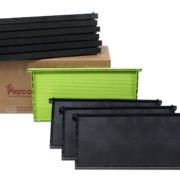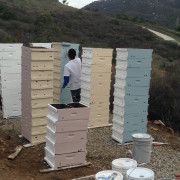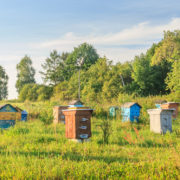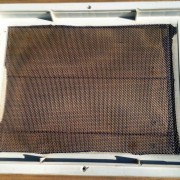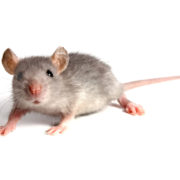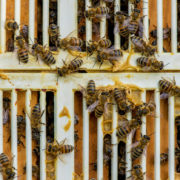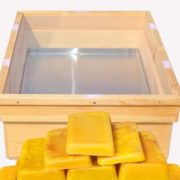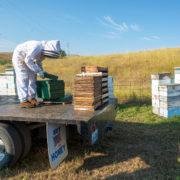The Fume Board
There are a number of ways of separating bees from their honey – some beekeepers use a simple brush, others use a bee blower – but the most efficient, at least in our opinion, is a fume board. More often than not, the fume board is the tool of choice for commercial and larger scale beekeepers when it comes time to harvest honey.
Over the course of the honey flow honeybees pack the top boxes of their hives – called “supers” or “honey supers” – with fresh nectar. They dry the nectar and convert it into honey. With any luck, by the end of the honey flow, the super is full of honey. A full sized or “deep super” can contain up to 80 lbs. of honey when full.
When it comes time to harvest the honey, a beekeeper needs to clear the bees from the super, so that the super of honey can be brought back to the shop for extraction and processing. This is where the fume board enters the scene. The bottom of the fume board is typically made of a sort of felt material. The beekeeper sprays this material with a fumigant. At Wildflower Meadows we use a natural spray made of almond oil extract, known commercially as “Bee Quick”.
Even though this spray smells great to us – something like almond marzipan – for some reason the bees can’t stand it. Especially when the sun hits the board and begins to accelerate the fumes, the bees begin a rapid downward exit from the honey super, and thus leaving it free of bees.
Large commercial beekeeping outfits sometimes use up to thirty of these boards at a time to harvest a large-sized apiary. With a crew of three or four beekeepers, each managing six or seven fume boards at a time, a commercial beekeeping company can harvest honey from an entire apiary of fifty or more colonies in about an hour!

